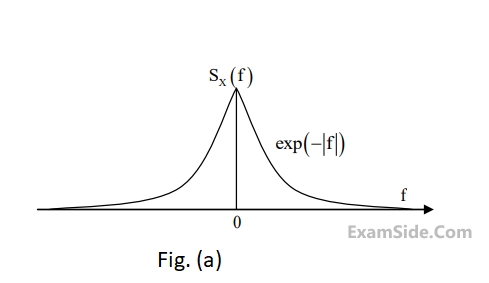As shown in Figure (b). The output of the low pass filter is $$y(t)$$.


Let $$E$$ be the expectation operator and consider the following statements :
$$\left( {\rm I} \right)$$ $$E\left( {X\left( t \right)} \right) = E\left( {Y\left( t \right)} \right)$$
$$\left( {{\rm I}{\rm I}} \right)$$ $$\,\,\,\,\,\,\,\,E\left( {{X^2}\left( t \right)} \right) = E\left( {{Y^2}\left( t \right)} \right)$$
$$\left( {{\rm I}{\rm I}{\rm I}} \right)\,$$ $$\,\,\,\,\,\,E\left( {{Y^2}\left( t \right)} \right) = 2$$
Select the correct option:
$$\,{u_o}(t) = 5\,\cos \,(20000\,\pi \,t);\,0 \le \,\,t\, \le \,T,$$ and
$${u_o}(t) = 5\,\cos \,(22000\,\pi \,t);\,0 \le \,\,t\, \le \,T,$$
where T is the bit-duration interval and t is in seconds. Both $${u_o}(t)$$ and $${u_1}(t)$$ are zero output the interval $$0 \le \,\,t\, \le \,T$$. With a matched filter (correlator ) based receiver, the smallest positive value of T (in milliseconds) required to have $${u_o}(t)$$ and $${u_1}(t)$$ uncorrelated is



